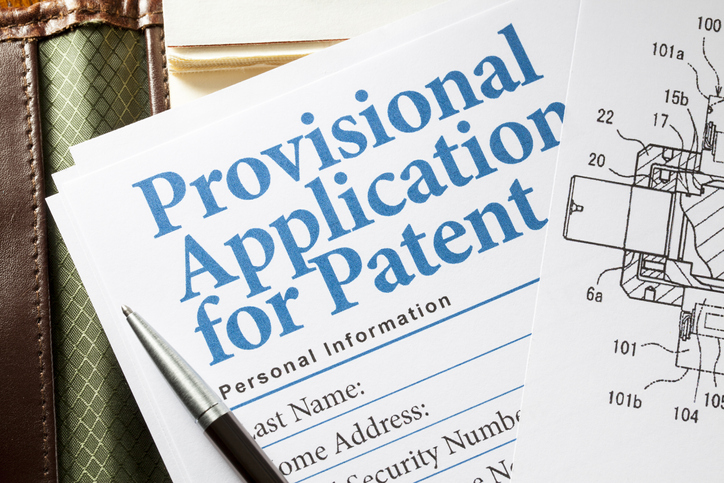Patents play a vital role in safeguarding the rights of inventors, fostering innovation, and promoting economic growth. When it comes to patent filing, it’s crucial to understand the difference between provisional and non-provisional patents, as each type serves a distinct purpose and offers different advantages. Here we will delve into the intricacies of these two types of patents, providing a clear comparison to help inventors make informed decisions about protecting their inventive ideas.
Overview of Provisional Patents
A provisional patent application, as the name suggests, is a preliminary filing that offers inventors a quick and cost-effective means to establish an early effective filing date in a later-filed non-provisional patent application. It allows inventors to use the term “patent pending” in reference to their innovation, which can provide a strategic advantage when pitching the idea to potential partners, investors, or consumers. A provisional patent application is not examined by the United States Patent and Trademark Office (USPTO), and lasts for 12 months from the filing date.
Despite its temporary nature, the importance of a provisional patent application cannot be underestimated. It provides inventors with a valuable window of time to refine their invention, gauge market potential, and seek funding before committing to the more complex and costly non-provisional patent application process. It’s also worth noting that a provisional application requires less detailed information than a non-provisional one. However, it must describe the invention in sufficient detail to enable a person skilled in the art to make and use the invention, ensuring the claimed invention is fully supported.
Overview of Non-Provisional Patents
A non-provisional patent, often referred to as a regular patent, is a legal document issued by the USPTO that gives the inventor exclusive rights to an invention. This type of patent prevents others from making, using, selling, or importing the patented invention without the patent owner’s permission. A non-provisional patent application initiates the official examination process where the USPTO reviews the application to determine if the invention meets all requirements for patentability.
Unlike provisional patents, non-provisional patents require a detailed description of the invention, including patent claims that define the scope of the invention’s protection, and often require formal patent drawings. They also undergo a rigorous examination process, which, if successful, results in the issuance of a patent typically lasting for 20 years from the filing date. The non-provisional patent application process can be complex and time-consuming, but it offers the most comprehensive form of intellectual property protection for an invention.
Key Differences Between Provisional and Non-Provisional Patents
Understanding the differences between provisional and non-provisional patents is crucial in determining the most suitable path for your invention. Here are the key distinctions:
- Duration of Protection: As noted above, a provisional patent application provides a “patent pending” status for 12 months. This gives inventors time to further develop the invention or gauge market interest. In contrast, a non-provisional patent lasts for 20 years from the filing date, offering long-term protection for the invention once the patent is granted.
- Application Complexity and Cost: Provisional patent applications are less complex, requiring fewer details about the invention, making them relatively cheaper and quicker to file. Non-provisional patent applications are more comprehensive, requiring formal patent drawings, detailed descriptions, and patent claims. They involve a thorough examination process, making them more costly and time-consuming.
- Examination Process: Provisional patents are not examined by the USPTO and cannot lead directly to a granted patent. Non-provisional patents undergo a rigorous examination process by the USPTO. If all requirements are met, they can lead to a granted patent that gives the owner exclusive rights to the invention.
- Nature of Protection: Provisional patents provide an early effective filing date but do not grant exclusive rights. Non-provisional patents offer full patent protection upon grant, preventing others from making, using, selling, or importing the patented invention without the patent owner’s permission.
Factors to Consider When Choosing Between Provisional and Non-Provisional Patents
When determining whether to file a provisional or non-provisional patent application, there are several important factors to consider. These factors can influence the strategic advantages of each patent type and guide inventors in making the best choice for their specific circumstances:
- Stage of Invention Development: If your invention is in the early stages of development or its market viability is untested, a provisional patent application can provide a cost-effective way to secure an early filing date. For more established inventions, particularly those with proven market potential, a non-provisional patent application may be the better route to secure comprehensive patent rights.
- Available Resources: The lower cost and complexity of a provisional patent application might be suitable for inventors or startups with limited resources. It offers the benefit of time to secure further funding before committing to the non-provisional patent application process. Inventors with sufficient resources might choose to directly file a non-provisional patent application to expedite the patent granting process and secure exclusive rights to their invention sooner.
- Future Plans for the Invention: If you plan to publicly disclose your invention (for example, at a conference, in a publication, or to potential investors), filing a provisional patent application can provide an immediate “patent pending” status and safeguard your rights. If you are ready to commercialize your invention and wish to prevent others from copying it, a non-provisional patent application offers robust, long-term protection and demonstrates a higher level of commitment to potential investors or partners.
Bold Patents Can Help You Decide What Type of Patent Is Right for You
Understanding the differences between provisional and non-provisional patents is crucial for inventors to strategically protect their intellectual property. Both types of patents have unique benefits and cater to varying circumstances. Given the complex nature of patent law, it’s beneficial to seek professional guidance when navigating these decisions. Our team of experienced patent attorneys at Bold Patents is here to provide personalized advice and assistance. Don’t hesitate to reach out to us today and take the first step towards protecting your innovative ideas.

